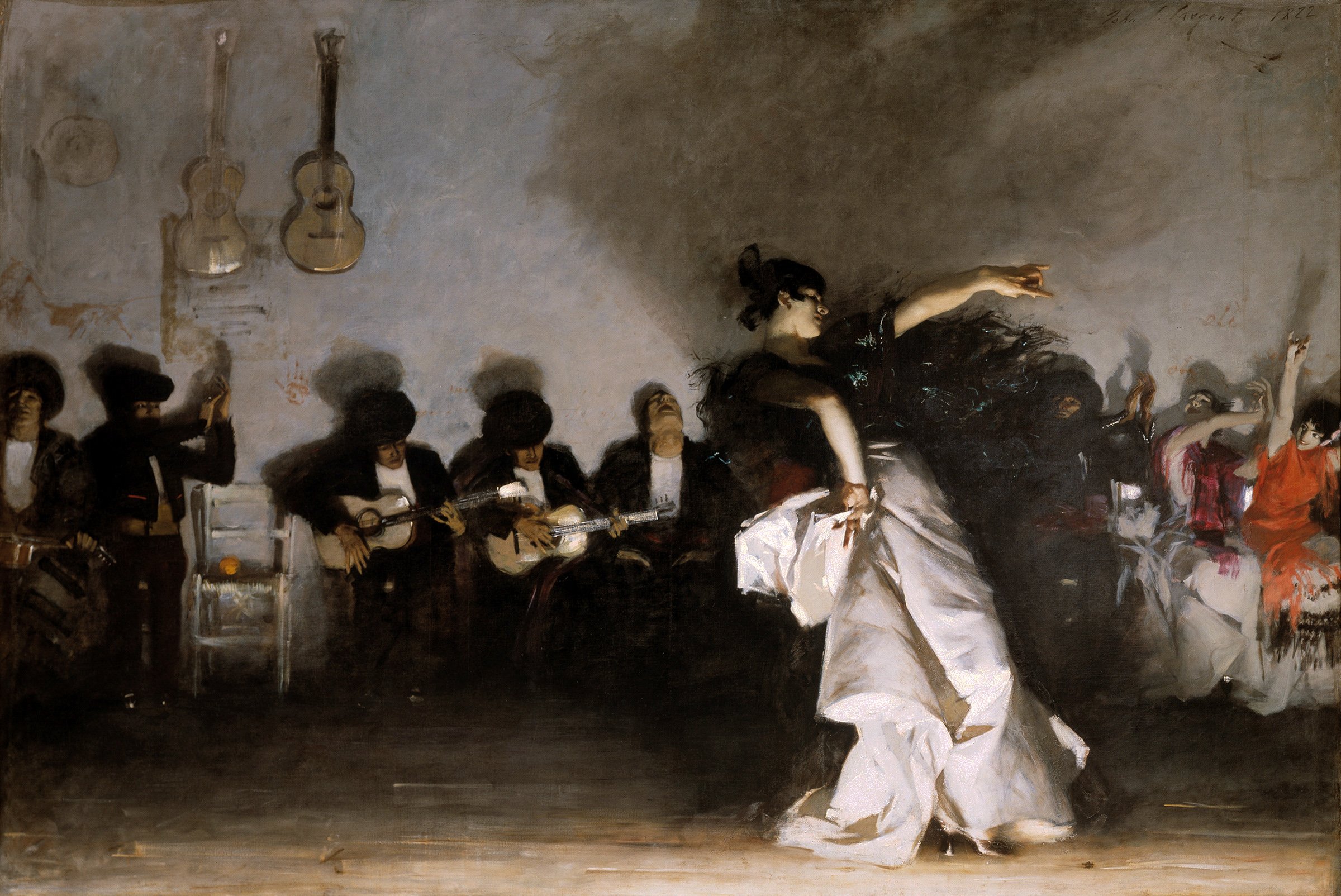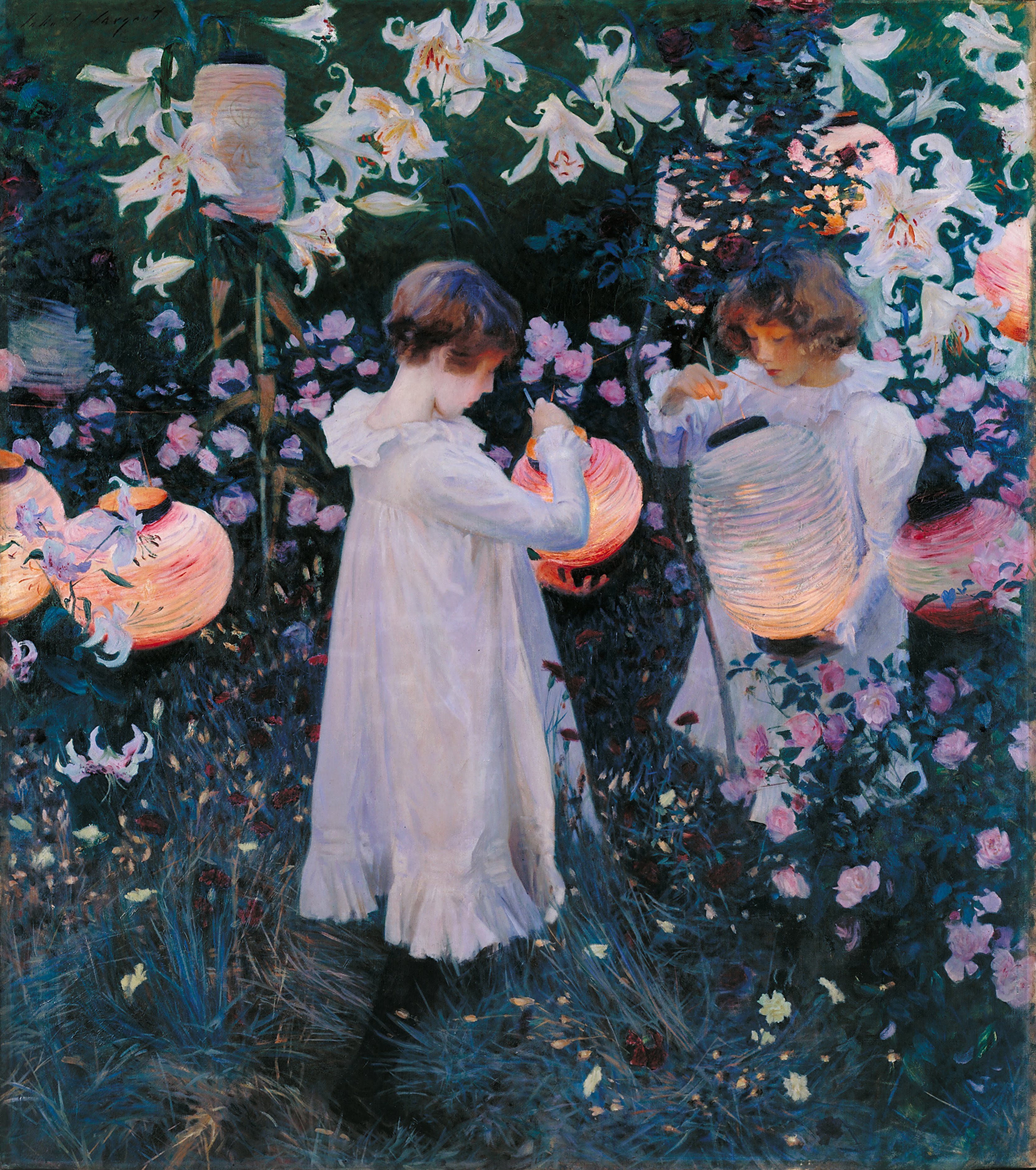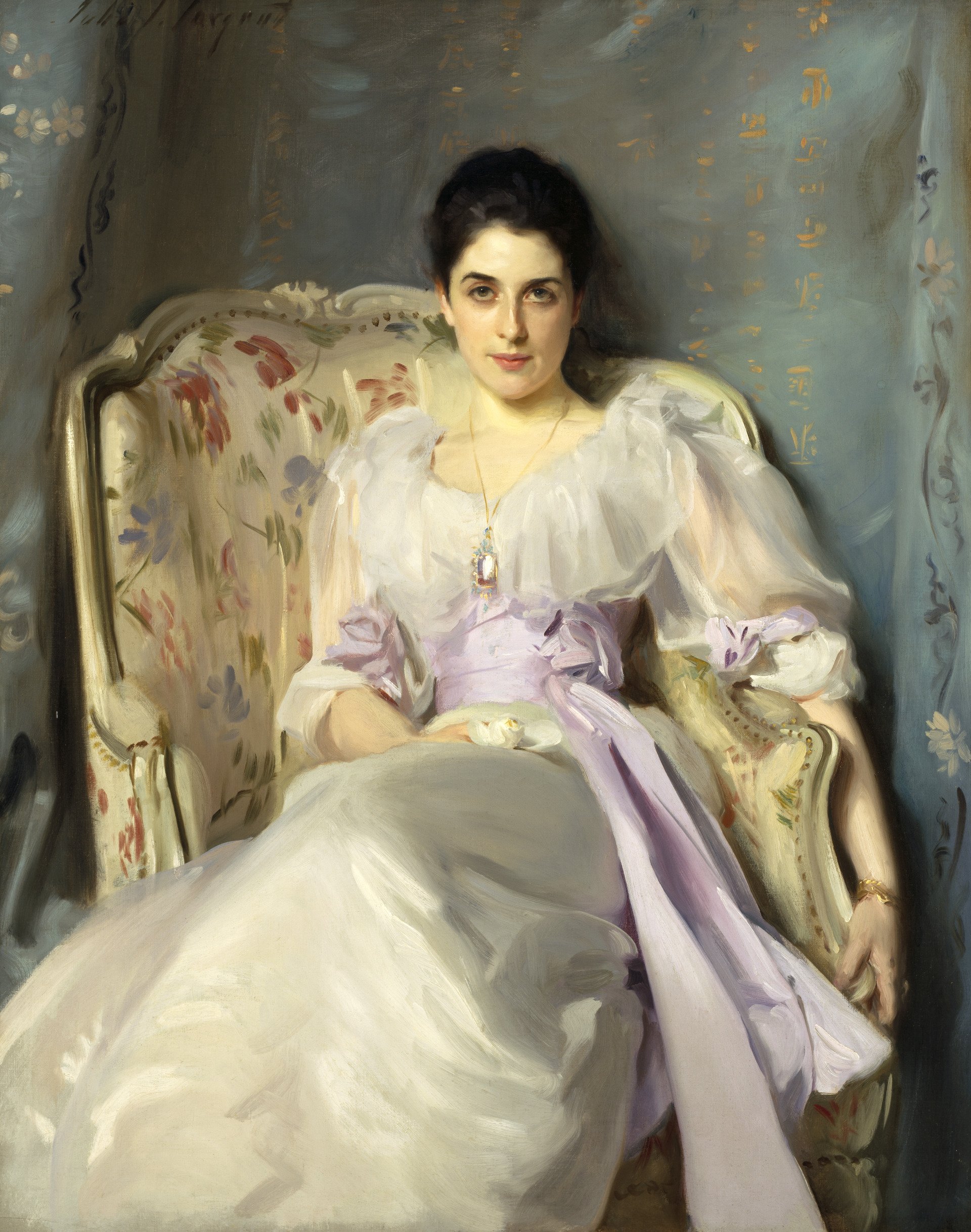John Singer Sargent’s reputation among art critics has risen, fallen, and risen again. He was once among the most celebrated painters in Europe and America. He scandalized Paris with Madame X, helped inspire The Picture of Dorian Gray, and was made the official artist of World War I. But when he died in 1925, artistic trends were already turning against representational art, and lush paintings of wealthy industrialists’ wives had become politically incorrect. In 1931, Lewis Mumford called him a mere “illustrator,” whose work was characterized by “contemptuous and cynical superficiality.”
Interest in Sargent began reviving twenty years ago, first with a 1999 exhibit at Boston’s Museum of Fine Arts—the same institution that hired Sargent to paint murals for its ceiling in 1916. Other Boston museums showed off their own Sargents that year, including the Gardner Museum, which owns several, most notably El Jaleo. Exhibits in New York (2015), Chicago (2018), and this year at the National Museum of Sweden, are helping to restore him to the pantheon, and the Gardner’s “Close Up: Sargent on Location” (closing Jan. 14) celebrates his connection with the museum’s founder, his patroness Isabella Stewart Gardner.

El Jaleo by John Singer Sargent
Born in Italy to American parents, Sargent lived most of his life in Europe. He studied in the Paris studio of Carolus-Duran, and his major influences were Velazquez and the French impressionists. The latter were personal friends, particularly Claude Monet and Paul Helleu, with whom he often painted. But his style was distinct, especially his use of dark contrasts. According to one revealing story, Sargent once ran out of black paint and asked to borrow some from Monet, only to find that the Frenchman didn’t carry any.
He adapted from the impressionists his characteristic style of bold brushstrokes and tricks such as the glob of white paint that gives the necklace in Lady Agnew of Lochnaw a glimmering 3D effect. Examined up close, Sargent’s paintings appear like streaks of color that couldn’t possibly make up the more-than-real images one actually sees when one steps back. And he combined this deceptive precision with a mastery of shading, which he enjoyed demonstrating by painting white-on-white—a demanding trick that under his brush seems like hardly any bother. As is usually the case, such apparent effortlessness was the product of painstaking discipline. His 1886 Carnation, Lily, Lily, Rose took months to complete, because he could paint only for a few minutes each evening when the light was perfect.

Carnation, Lily, Lily, Rose by John Singer Sargent
Sargent was also skilled at selecting poses that bring his subjects to life. Instead of forcing Homer St. Gaudens into a stale, statuesque position, he captured the boy’s candid, slouching boredom. Édouard and Marie-Louise Pailleron sit like they’re about to disclose some haunting secret. And Pamela, the middle Wyndham Sister, fiddles idly with her ring like the flirtatious dynamo she was. Yet his works don’t descend into bland, documentary naturalism. On the contrary, these realistic touches amplify the glamorous, sometimes otherworldly beauty that Sargent drew out of real people.
His skill at abstraction often makes his portraits more like windows into an ideal world than faithful depictions of his models. Consider Mrs. Fiske Warren and Her Daughter Rachel, now on display at the Gardner alongside a photo of the two posing. They’re by no means ugly, but on canvas, they become what they no doubt wished they were. “Women don’t ask you to make them beautiful,” he wrote, “but you can feel them wanting you to.”
Or consider his greatest portrait, Lady Agnew. The real Gertrude Vernon was a moderately attractive noblewoman who was ill much of her life, including when the artist was working. But the painting, finished in just six sittings with no preliminary sketches, transcends reality. She vibrates with a liveliness only thinly veiled with nonchalance, just as the translucent sleeves of her gown shield the arms beneath. Her leisurely pose, on one hip diagonal with the chair, contrasts with the hypnotic attentiveness of her gaze, giving the impression—to borrow a line from Sargent’s contemporary, Joseph Conrad—of “the stillness of an implacable force brooding over an inscrutable intention.” Lady Agnew goes beyond formal portraiture, and transports the viewer into a realm of elegance and intrigue.

Lady Agnew of Lochnaw by John Singer Sargent, National Galleries of Scotland
Despite efforts by later critics to marginalize his work, Sargent influenced generations of painters—from John White Alexander to Daniel E. Greene to Ariana Richards. Perhaps his finest admirer in recent years was Pino Daeni, whose sensual oils adapted Sargent’s sweeping brush strokes and lively poses to a more exotic color palette. One can only hope that the recent Sargent revival will inspire still more. As the master of elevated grace, his legacy will forever be cherished by those who long for an art that expresses life as it could and ought to be.


![[TEST] The Objective Standard](https://test.theobjectivestandard.com/wp-content/uploads/2017/10/logo.png)










